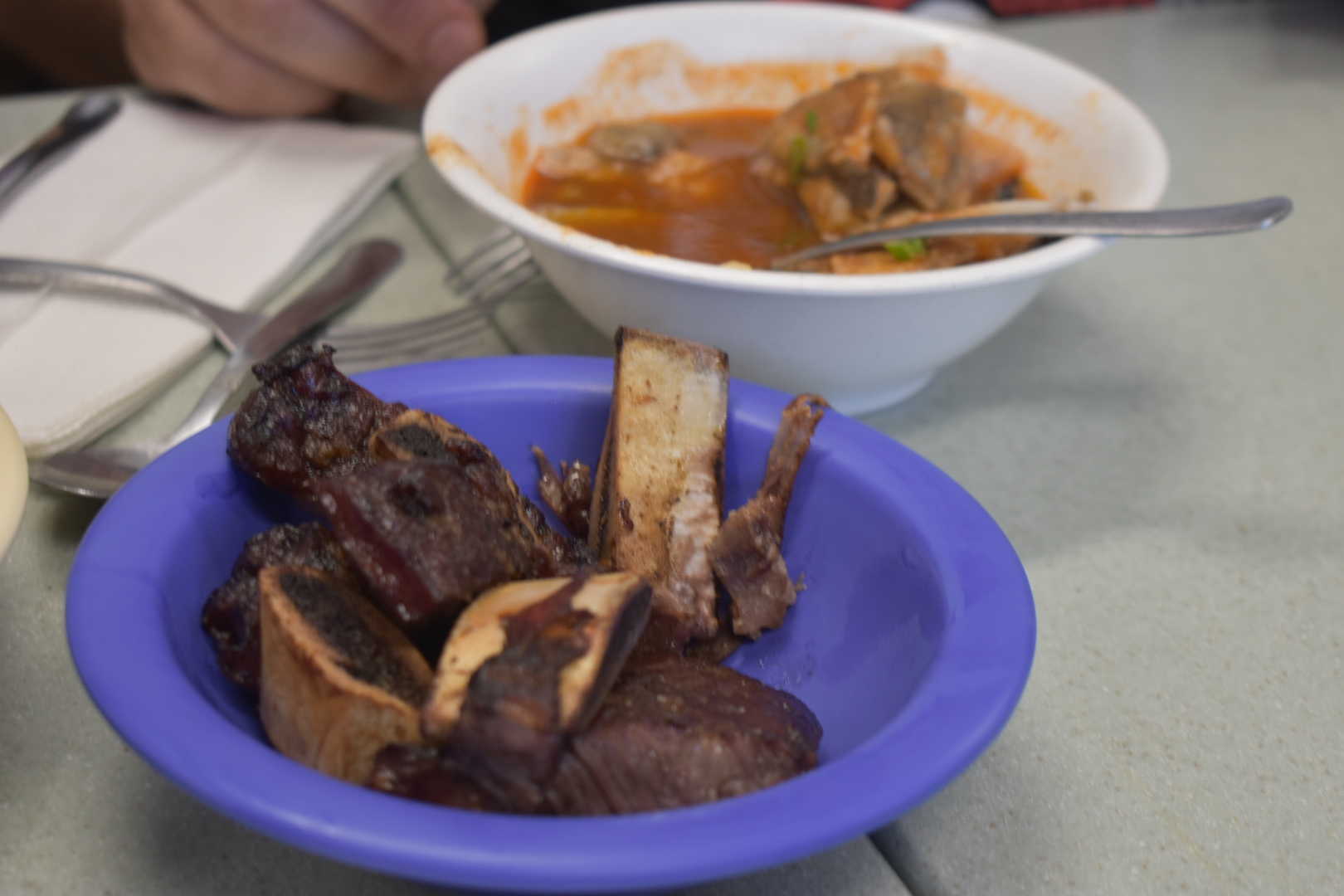Hawaii, renowned for its stunning landscapes and vibrant culture, boasts a diverse and delectable culinary scene. Among the many culinary treasures, one dish that stands out is Pipikaula Ribs. This savory delight offers a unique taste of Hawaiian cuisine, rooted in tradition and bursting with flavor.
The origins of Pipikaula Ribs can be traced back over a thousand years, to the arrival of the early Polynesian settlers in the Hawaiian Islands. These resourceful pioneers brought with them not only their knowledge of agriculture and navigation but also their expertise in livestock farming. Among the animals they introduced were cattle, which would go on to play a significant role in Hawaiian culture and cuisine. Recognizing the need to preserve meat for sustenance during periods of scarcity, the Polynesian settlers devised a method that would later become the foundation of Pipikaula. They began by carefully selecting cuts of beef, typically from the brisket or short ribs, known for their ideal balance of meat and fat. These cuts were then expertly trimmed and sliced into thin strips, resembling ropes in appearance and texture.
To ensure the longevity of their meat supply, these early settlers turned to nature’s own preservatives: salt and the sun. The beef strips were generously coated with sea salt, a readily available resource in the island environment. This salt acted not only as a flavor enhancer but also as a natural curing agent. The meat was then left out to air-dry in the warm Hawaiian sun, where the combination of salt and natural dehydration would effectively extend its shelf life.
Over time, this method evolved into a staple of Hawaiian cuisine, cherished for its ability to transform humble cuts of beef into a flavorful and long-lasting food source. The name “pipikaula,” derived from the Hawaiian words “piki” (beef) and “kaula” (rope), pays homage to the distinctive appearance and preparation process of this preserved meat.
Preparation, Seasoning and Cooking
The meticulous process of crafting Pipikaula Ribs exemplifies the artistry and expertise that lies at the heart of Hawaiian culinary tradition. It all begins with the careful selection of high-quality beef, a crucial step that sets the foundation for the dish’s exceptional flavor and texture. Among the preferred cuts are brisket and short ribs, chosen for their ideal balance of lean meat and succulent marbling. With precision and skill, the chosen cuts of beef are expertly trimmed to remove excess fat and ensure uniformity in thickness. This step is crucial in achieving a consistent texture and allowing the marinade to permeate every fiber of the meat. Once prepared, the beef is then transformed into thin, elongated strips, resembling the traditional “beef ropes” that inspired the dish’s name. The next stage involves the creation of the marinade, a carefully curated blend of flavors that imparts the distinctive taste of Pipikaula. This mixture typically includes a generous portion of salt, which not only enhances the flavor of the beef but also aids in the preservation process. Soy sauce is introduced to provide a rich, savory depth, while garlic infuses the marinade with its aromatic pungency. Complementary seasonings are added, which may include a medley of herbs and spices, allowing for a harmonious fusion of flavors.
As the beef strips luxuriate in this flavorful concoction, they undergo a transformative process, absorbing the amalgamation of savory and umami notes. This infusion imbues the meat with a complexity of taste that is quintessentially Pipikaula. The result is a symphony of flavors that culminate in a dish both robust and nuanced, a true testament to the culinary expertise and cultural significance that defines this Hawaiian delicacy. Traditionally, Pipikaula is air-dried in the sun, a practice deeply ingrained in Hawaiian culinary heritage. The drying process allows the meat to develop a robust, concentrated flavor while preserving its tenderness. In some variations, the meat may be smoked over wood chips, imparting a delightful smokiness to the ribs. Once dried and infused with flavor, Pipikaula Ribs are ready to be cooked. They can be grilled, pan-fried, or even oven-baked to perfection. The cooking process caramelizes the marinade, creating a delectable crust on the surface while keeping the meat tender and succulent on the inside. Pipikaula Ribs are often served alongside traditional Hawaiian accompaniments such as poi (taro paste), lomi-lomi salmon (a tomato and salmon salad), and haupia (coconut pudding). This combination of flavors and textures creates a truly immersive culinary experience.

While Pipikaula Ribs have deep roots in Hawaiian cuisine and are often associated with the islands, variations of preserved or dried meat can be found in other Polynesian cultures as well. Similar techniques of salting and air-drying meat for preservation were utilized by early Polynesian settlers across various islands in the Pacific. For example, in places like Samoa, Tonga, and Tahiti, similar methods were employed to prepare preserved meats known by different names. In Samoa, it’s called “pisupo,” which is made from salted and canned beef or mutton. In Tonga, “lamb flaps” are prepared through a similar process. In Tahiti, “po’e” refers to a dish made from mashed breadfruit and dried meat, a method akin to the preservation of Pipikaula. While the specific flavors, seasonings, and methods may vary from one island to another, the practice of preserving meat through salting and drying is a shared tradition in Polynesian cultures. This demonstrates the resourcefulness and ingenuity of early Polynesian settlers in ensuring a stable food supply in their new environments.
Having had the pleasure of savoring Pipikaula Ribs at Helena’s Hawaiian Food, an establishment steeped in over five decades of culinary tradition, I can attest to the unparalleled taste and flavor profile of this iconic Hawaiian dish. As I sank my teeth into the tender, marinated beef, a symphony of savory and umami notes danced on my palate. The first impression was one of succulence, as the meat yielded effortlessly to each bite, a testament to the careful selection and preparation it had undergone. The marinade, with its judicious balance of salt, soy sauce, garlic, and aromatic seasonings, elevated the taste to a new dimension. The salt imparted a subtle but essential salinity, enhancing the natural flavors of the beef, while the soy sauce contributed a rich, savory depth that spoke of the dish’s Hawaiian heritage. The presence of garlic added a delightful pungency, its aromatic essence mingling harmoniously with the other ingredients. Each bite was a revelation, a culinary journey that celebrated the cultural and historical significance of Pipikaula Ribs. The legacy of Helena’s Hawaiian Food, spanning more than half a century, was evident in every delectable morsel, a testament to the enduring appeal and artistry that define this beloved Hawaiian delicacy.






